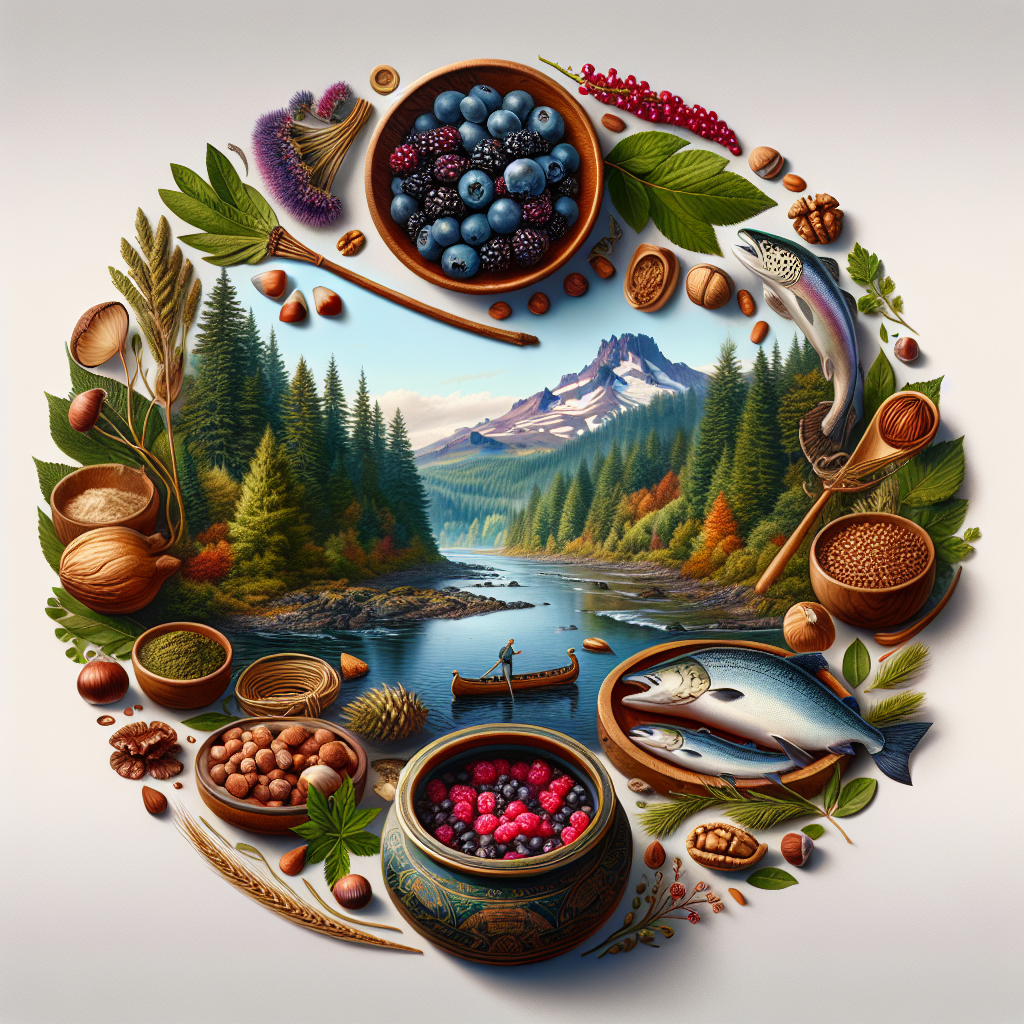Savoring Oregon’s Indigenous Foods: A Journey through Time
Nestled between California and Washington, Oregon bears the rich legacy of Indigenous cultures stretching back as far as 14,300 years. This diverse state is bathed by the serene Pacific Ocean to the west, lined with lush Douglas Fir forests, ghostly expanses of sagebrush in the high desert, and the towering majesty of Mount Hood, our perennial sentinel to the east. As an Oregon local, one should embrace the chance to delve into the culinary treasures left behind by the state’s Indigenous ancestors. Wandering this vibrant patchwork quilt of ecosystems brings an appreciation for the cornucopia of traditional foods that comprised the diet of Indigenous Oregonians like the Chinook, Kalapuya, and Takelma tribes.
Nurtured by Nature’s Bounty
Oregon’s landscape is a veritable menu of traditional indigenous foods, each telling a story of the cultures that have intimately acquainted themselves with our state’s verdant bounty. Pull on some waders and venture into the Tillamook Bay, and you’ll be treading on the same paths where the Tillamook peoples once gathered shellfish, including clams and oysters. Or go mushroom hunting in the mist-dusted undergrowth of Siuslaw National Forest, keeping an eye out for Pacific golden chanterelles, a local delicacy cherished by tribes such as the Coos and Siuslaw.

In the sleepy town of Siletz, the Confederated Tribes of Siletz Indians continue to honor their legacy through the cultivation of traditional foods. Their annual Nesika Illahee Pow-Wow, an event that feels like a warm family reunion, features demonstrations of traditional food preparation, including venison, elk, and traditional root vegetables. On a cold Oregon day, nothing warms the bones like a bowl of venison stew, lovingly prepared with root vegetables and wild berries. The Siletz encourage all curious food lovers to come and savor these foods in the spirit of sharing and cultural understanding.
Fishing the Columbia
Crossing the mighty Columbia River on the iconic Astoria-Megler Bridge is always a reminder of the river’s central role in Indigenous food traditions. With its waters teeming with salmon and sturgeon, the Columbia became the main artery feeding the people of Oregon’s northern tribes. Fishing platforms still punctuate the waterway, quietly marking out our history.
In the town of Cascade Locks, an area sacred to the Warm Springs, Wasco, and Paiute tribes, visit Brigham Fish Market. Here, the Brigham sisters, of the Confederated Tribes of the Umatilla Indian Reservation, honor their Indigenous heritage by providing fresh, locally caught salmon to the community. The smoky aroma of their planked salmon will make you appreciate our Indigenous forebears who first seared salmon on alderwood planks.
The Heart of Huckleberry Country
If you’ve ever hiked the rugged part of Mount Hood Wilderness trails in the late summer, you may have chanced upon patches of huckleberries, their ruby hues adding a splash of color to the sun-dappled undergrowth. These wild berries were a critical food source for the tribes of Oregon’s Plateau region, such as the Warm Springs and the Wasco. Nowadays, locals and visitors alike enjoy the sweet tartness of huckleberries in various forms. Try the warm huckleberry cobbler at the Rainbow Trout Farm in Sandy, or the huckleberry ice cream from Salt & Straw in Portland, and you can taste the flavor of history.
Our Table, their Legacy
The indigenous foods of Oregon not only shaped the palette of Oregon’s native peoples, but also left an enduring mark on Oregon’s modern culinary scene. Just meander through any farmer’s market in our beloved Beaver State, be it Portland, Eugene, or Bend. The stalls brim with colorful produce, with roots like camas and wapato, and berries like salal and Oregon grape—all traditional indigenous foods.
Our state’s commitment to farm-to-table and sustainable practices has been influenced by our Indigenous ancestry. In our beloved city of Portland, cozy up on those inevitable rainy days in the café “Bison Coffeehouse,” the city’s first Native-owned coffee shop, where owner Loretta Guzman of the Shoshone Bannock tribe features game meats like bison and elk.
Oregon’s cultural culinary treasure is a testament to the adaptive ingenuity of our Indigenous ancestors. Efforts to preserve these traditional foods are important not just for our taste buds, but to honor and respect the cultures that have shaped Oregon’s identity. So let’s dig in, let’s savor, and let’s remember—the taste of Oregon is best experienced not in a rush, but slowly, like a story unveiled one bite at a time. It is an invitation to both a meal and a journey—a flavorful exploration of Oregon’s indigenous heritage.
